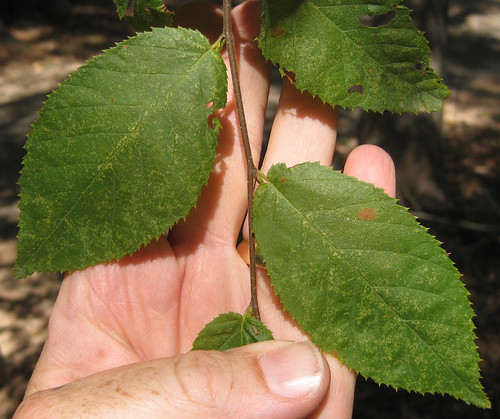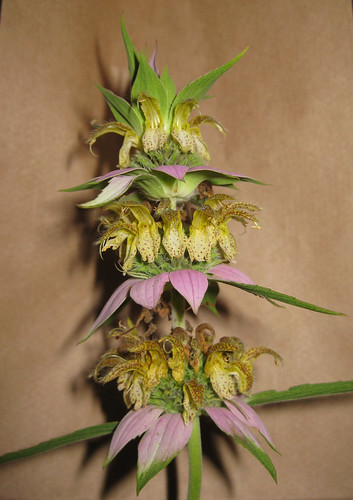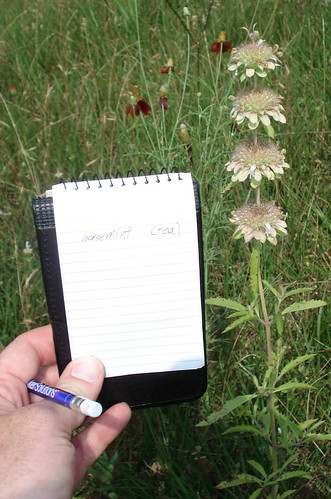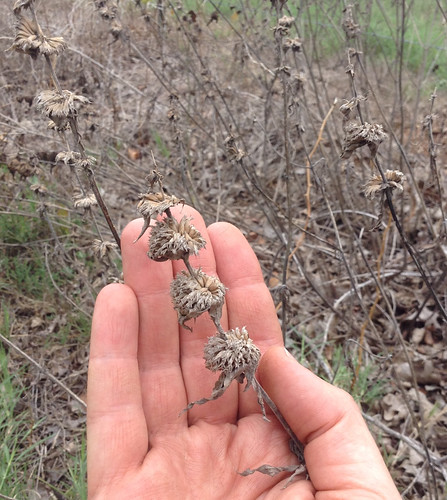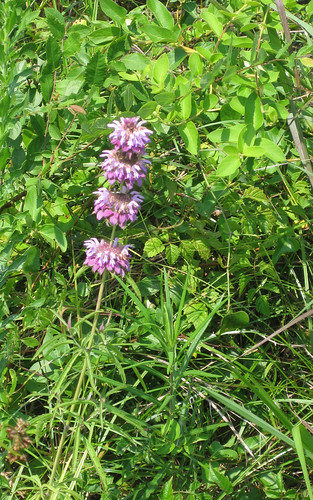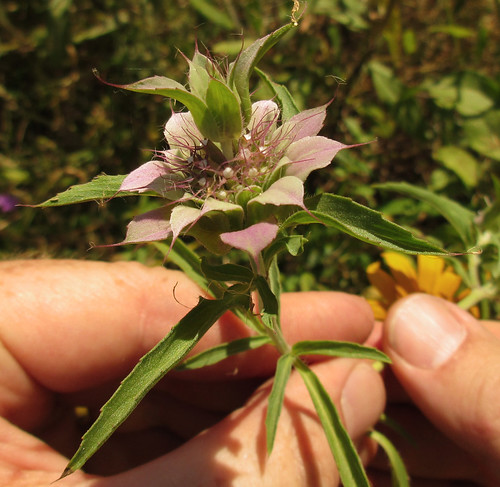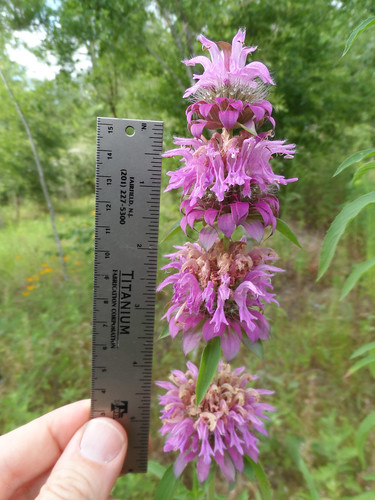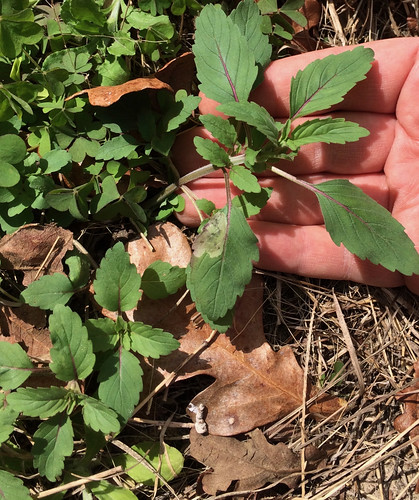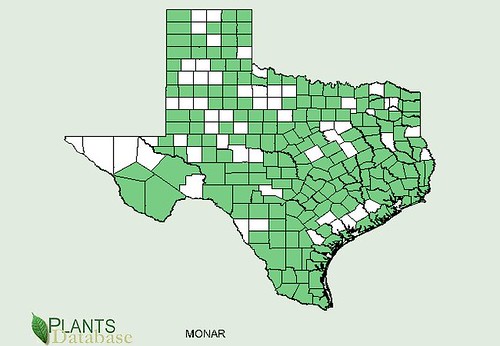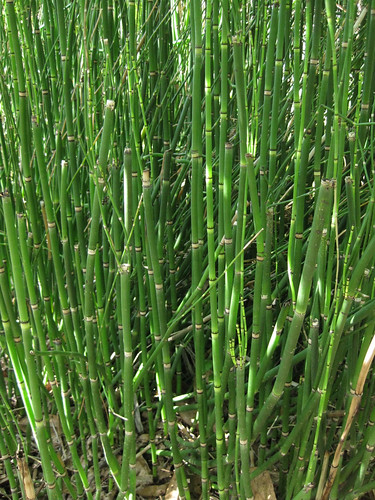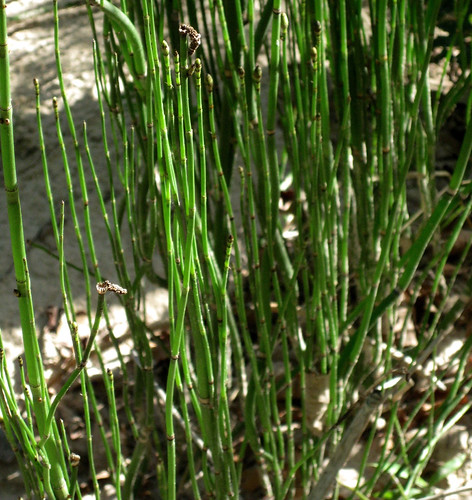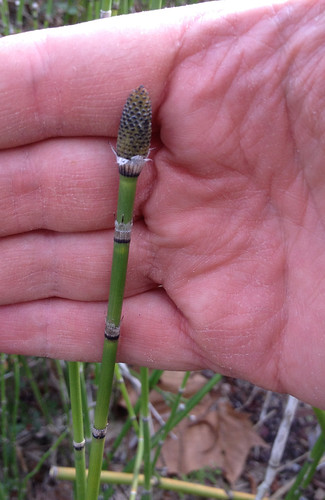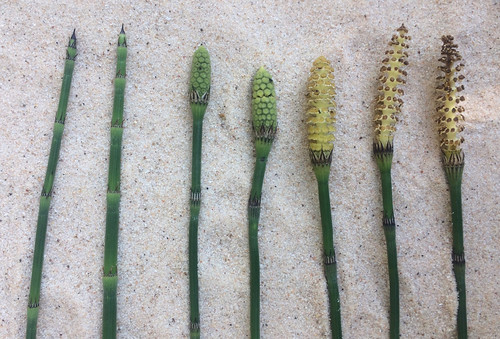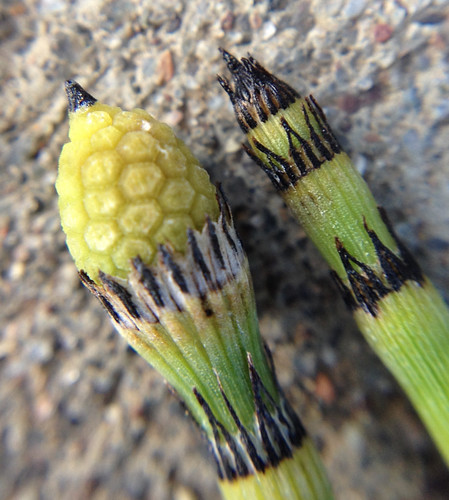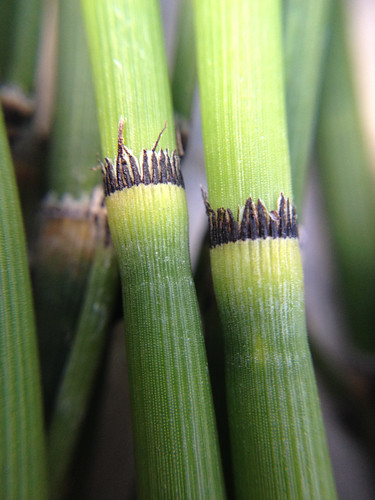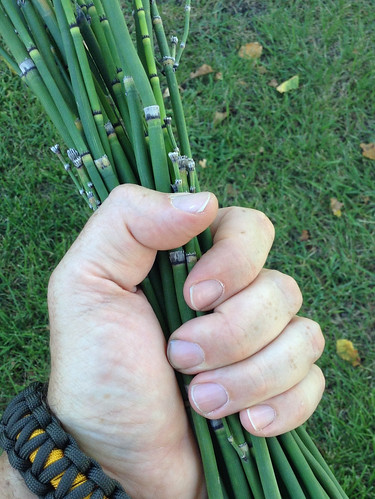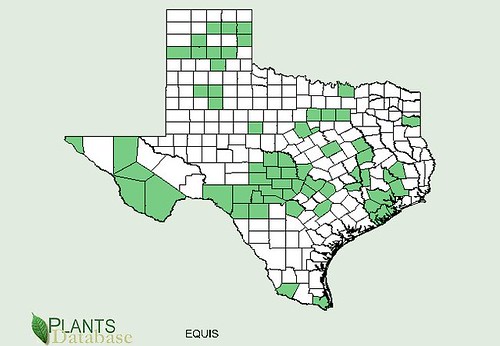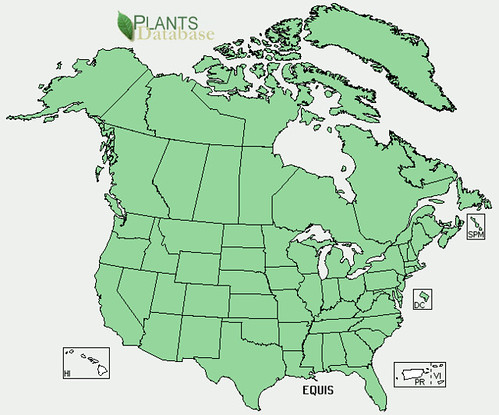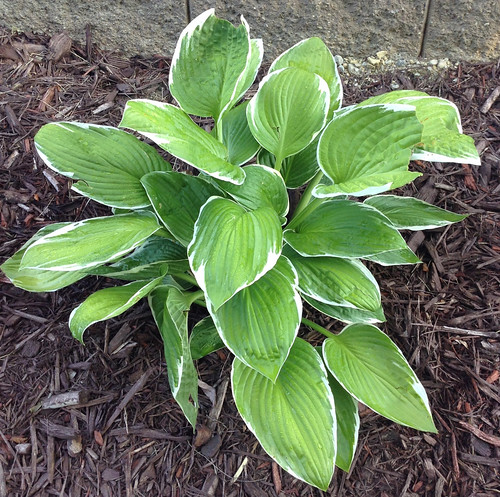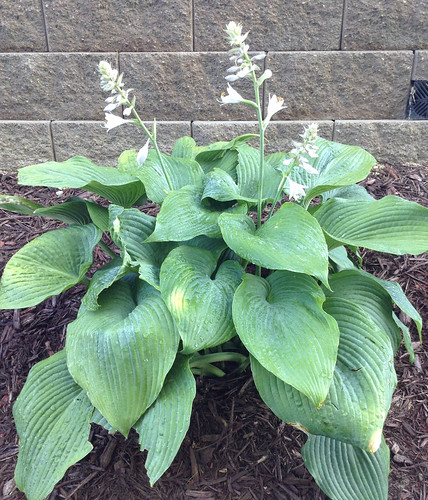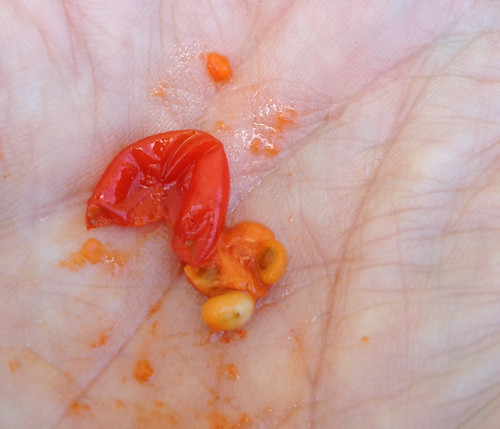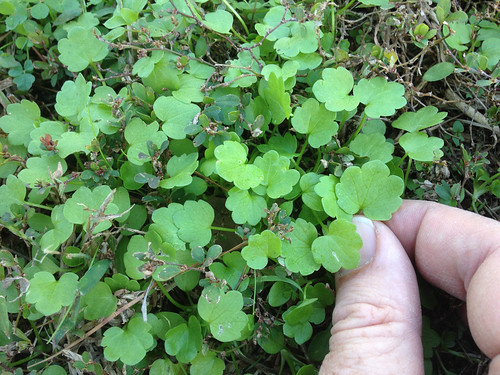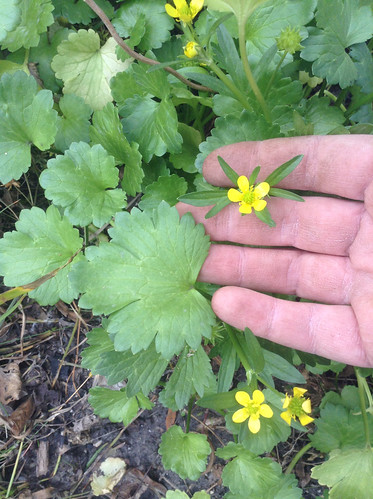Scientific Name(s): Conyza canadensis
Abundance: plentiful
What: leaves, seedlings
How: leaves dried or fresh, seasoning; seedlings boiled
Where: fields, borders, disturbed soil
When: spring, summer
Nutritional Value: protein, calcium, zinc
Dangers: contact may cause skin rash in a small number of people.
Leaf Arrangement: Leaves are arranged in an alternate pattern along the stem.
Leaf Shape: The leaves are lanceolate to oblong, measuring about 1 to 4 inches in length and 0.1 to 0.5 inches in width.
Leaf Venation: Venation is pinnate, with a central vein and smaller veins branching off.
Leaf Margin: The leaf margins are entire or slightly toothed.
Leaf Color: Leaves are a dull green, sometimes with a slightly paler underside.
Flower Structure: The plant produces numerous small flower heads, each with a central disk of tiny yellow flowers surrounded by a few white to pale pink ray flowers.
Flower Color: Disk flowers are yellow, while ray flowers are white to pale pink.
Fruit: The fruit is a small, dry, one-seeded achene.
Seed: Seeds are tiny, enclosed within the achenes.
Stem: The stem is single, erect, and begins branching near the top.
Hairs: There are fine hairs on the stems and leaves, giving the plant a slightly rough texture.
Height: The plant typically grows to a height of about 1 to 3 feet.
Mature horseweed, pulled up from the ground.
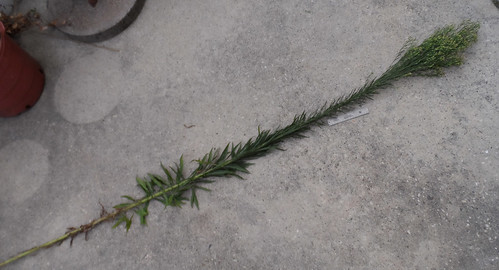
Close-up of young, top, lesser-toothed leaves.

Close-up of lower, mature, toothed leaves.
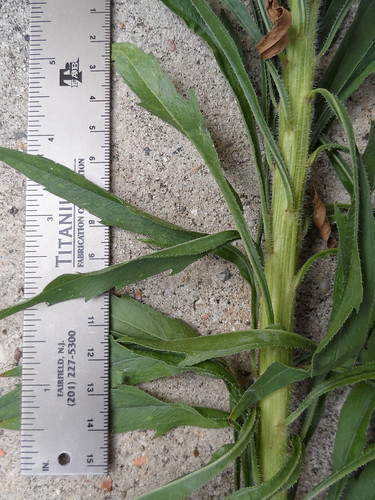
Young horseweed.
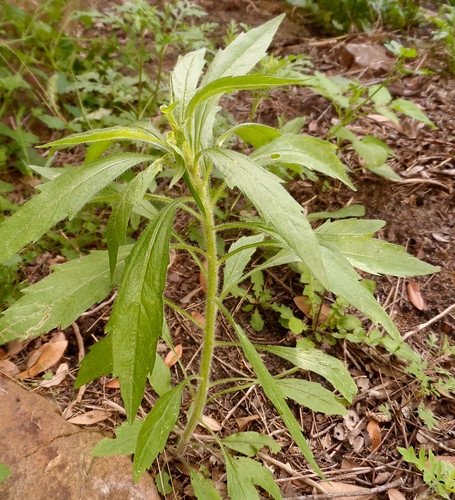

Close-up of young, hairy stem.
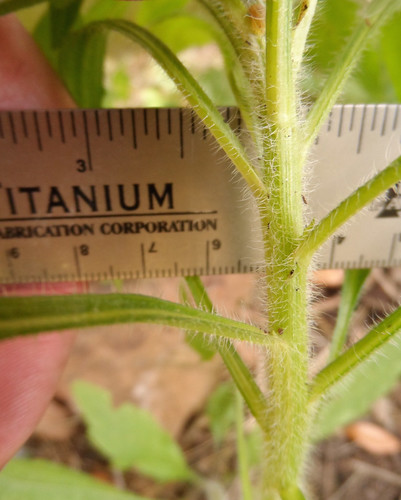
Close-up of top but soon to be lower leaves.
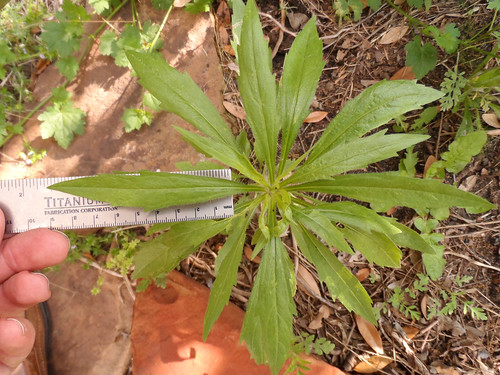
Very close-up of lower horseweed leaf.

Horseweed flower cluster.


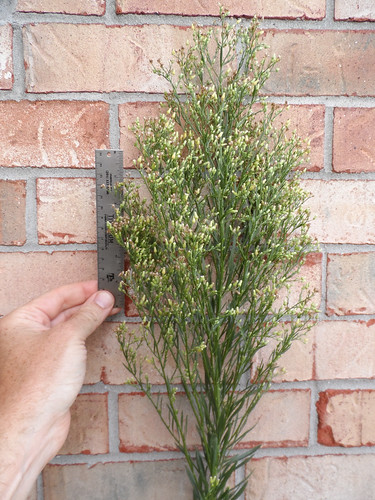
Close-up of horseweed flower buds.

Horseweed on the left,
Goldenrod on the right.
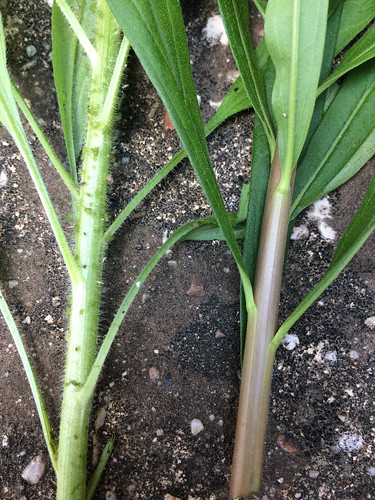 Goldenrod
Goldenrod leaf on the left, Horseweed leaf on the right.
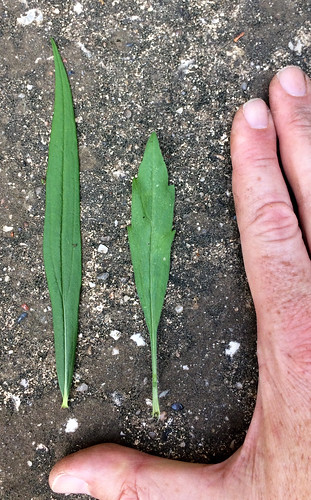
Texas distribution, attributed to U. S. Department of Agriculture. The marked counties are guidelines only. Plants may appear in other counties, especially if used in landscaping.
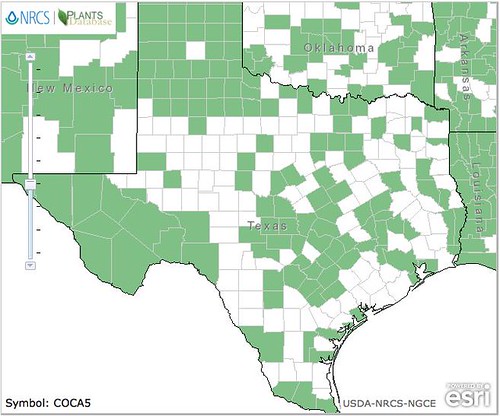
North American distribution, attributed to U. S. Department of Agriculture.
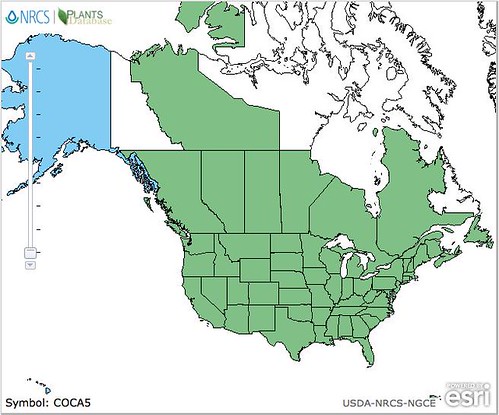
Commonly found near the similar-looking
goldenrod, horseweed is another plentiful, delicious weed. It prefers sunny, non-acidic soil that has already suffered being disturbed by mankind. Horseweed usually appears in late spring after goldenrod but comes to flowering maturity earlier, usually in later summer. The plant itself is tall, thin, with lance-shaped leaves. Horsehide leaves are found opposite one another with each set alternating 90 degrees from the previous two leaves. Leaves start out fairly lanceolate in shape but become more toothed as they mature. The stem and leaves are both hairy, differing them from the smooth, hairless goldenrod. The plant produces hundreds of tiny, white, dandelion-like flowers which splay out less than those of the bright yellow, pyramids of goldenrod flowers.
Taste and flavor-wise, horseweed is worlds apart from goldenrod. The young, tender seedlings are boiled by some as a somewhat spinach-flavored potherb. As it matures the flavor becomes more herb-like, reminding me of oregano-basil mix. At this stage I really like using its leaves to flavor venison roasts as they slow-cook in a crockpot all day. Really, what better seasoning for wild meat than wild herbs?!
Use a sharp pruning shears to snip off the last 3-4 sets of leaves for use as seasoning. While they can be dried by hanging in your house for later use, the slow-cooking process excels at releasing its flavor even from green, fresh leaves. This plant will continue to grow after this pruning, sometimes putting up multiple new shoots from the point of the cut. You'll often be able to get 2-3 harvests from a single plant over the course of the spring/summer.
Tea made from the leaves has long been used to treat diarrhea and dysentery.
Once the flowers appear in July/August/September its use as food has come to an end. A single plant will produce thousands of drifting seeds, many of which will produce new plants the following spring.
Medicinal Summary:
Leaves; Stem - soothes chronic inflammations of gastrointestinal tract; anti-diarrheal; soothes respiratory tract inflammations; soothes sore throat; antimicrobial; stops bleeding (tisane)

